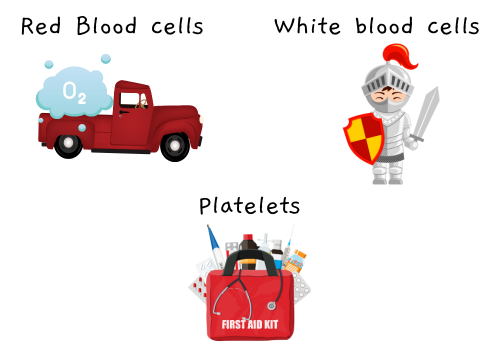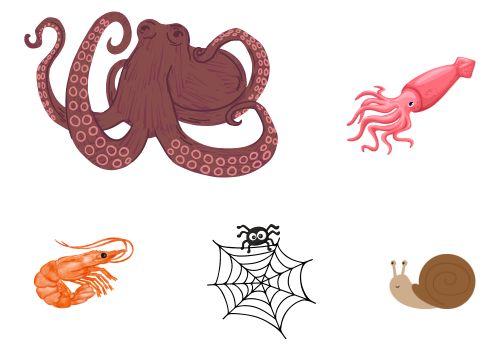Learning about the circulatory system
The circulatory system, also known as the cardiovascular system, is responsible for transporting blood, nutrients, oxygen, carbon dioxide, and hormones throughout the body. It consists of the heart, blood vessels, and blood. The term “circulatory” refers to the circulation of blood from the heart to the rest of the body and then back to the heart. The system plays a crucial role in supplying oxygen and nutrients to the cells in our body.
The Heart
To learn about the heart and the circulatory system, we used several books, a model called “The Human Heart” from Learning Resources, a homemade model of the circulatory system, and The Circulatory Activity book which I made for my daughter.

The heart, located in the chest cavity between the lungs, is protected by the ribs and acts as a pump to circulate blood throughout the body. The heart consists mostly of muscle. When the heart muscle relaxes, blood flows into the chambers. When the muscle contracts, it squeezes and propels blood into the body.
The heart is composed of four chambers:
- Right atrium
- Right ventricle
- Left atrium
- Left ventricle

- Two large veins carry oxygen-poor blood from the body to the heart.
- The heart pumps oxygen-poor blood to the lungs, where oxygen is added to the bloodstream.
- Once the lungs oxygenate the blood, it enters the left side of the heart.
- The left side of the heart then pumps oxygen-rich blood throughout the rest of the body’s circulatory system.
To demonstrate this process, my 5-year-old daughter and I created a circulatory model using 2 balloons, 4 glass jars, clear tape, water, red and blue food coloring, and a pump tubing.
Here are the instructions for creating one side of the heart; just duplicate the process and replace straws with tubes to make the other side.
The heartbeat sound we hear is the sound of valves opening and closing in the heart, preventing the backflow of blood. For adults, a typical resting heart rate ranges from 60 to 100 beats per minute. Young children typically have higher resting heart rates than adults. When we exercise, our heart beats faster to supply more blood to our muscles.
Blood Vessels
Blood vessels form the network through which blood flows, acting like roads that blood travels on to reach different parts of the body.
There are three main types of blood vessels:
- Arteries: carry oxygen-rich (red) blood away from the heart to the rest of the body.
- Veins: Carry oxygen-poor (blueish) blood back to the heart from the body.
- Capillaries: Tiny blood vessels that connect arteries and veins, enabling the exchange of oxygen, carbon dioxide, nutrients, and waste products between blood and tissues. The walls of capillaries are only one cell thick.
Note: Arteries carrying oxygen-rich blood and veins carrying oxygen-poor blood holds true every except for between the heart and lungs, where it’s swapped.
Did you know? Most bruises happen when capillaries near the skin’s surface break due to an impact or injury. This causes blood (usually oxygen-poor, blueish) to leak out of the vessels, forming a dark blue/purple mark. Over time, the body reabsorbs the blood, making the mark fade and eventually disappear.
The circulatory network reminds me of tree branches, with many interconnected pathways. They both have a fractal design.

Blood serves as the body’s delivery system, providing essential supplies such as oxygen, salts, glucose, fats, amino acids, and hormones to our organs and tissues.
Blood consists of the following components:
- Plasma: A yellow liquid that contains water, proteins, hormones, nutrients, and waste products.
- Red Blood Cells: These carry oxygen in the blood. After delivering oxygen to tissues, red blood cells pick up carbon dioxide, a metabolic waste product, from cells. The carbon dioxide is then transported back to the lungs, where it is exhaled out of the body. Each red blood cell lives for about four months, and millions of blood cells are produced every second in the bone marrow of our flat bones (ribs, shoulder blades, etc.).
- White Blood Cells: These cells fight infection. The body sends millions of white blood cells to an injury to repair the damage.
- Platelets: These form blood clots to stop bleeding and heal wounds.
This picture rebus helped my 5-year-old daughter to remember the word “platelets.”

I created this picture to help my daughter remember the functions of different blood cells:

We used red and white jelly beans, pink mini gummy bears, gelatin, and natural yellow food coloring. Red jelly beans represented red blood cells, white jelly beans symbolized white blood cells, and gummy bears stood in for platelets. We mixed water, gelatin, and food coloring to create “plasma”, then added different types of “blood cells” into the “plasma” and left it in the fridge overnight.
The next day we did a recap of the lesson while enjoying the treat.

It takes about 30 seconds for a blood cell to travel from the heart to a capillary and then back to the heart.
The volume of blood in a person’s body varies according to their size—the larger the person, the more blood they have. A newborn baby has about a cup of blood in their body, while an adult weighing between 150 and 180 pounds contains roughly 1.2 to 1.5 gallons of blood.
Our blood is red because of the hemoglobin inside our red blood cells. Heme, a part of the hemoglobin molecule, contains a red-colored compound with an iron atom that binds to oxygen. This molecule is responsible for transporting oxygen from the lungs to other parts of the body.
Did you know that there are creatures with blue-colored blood?
